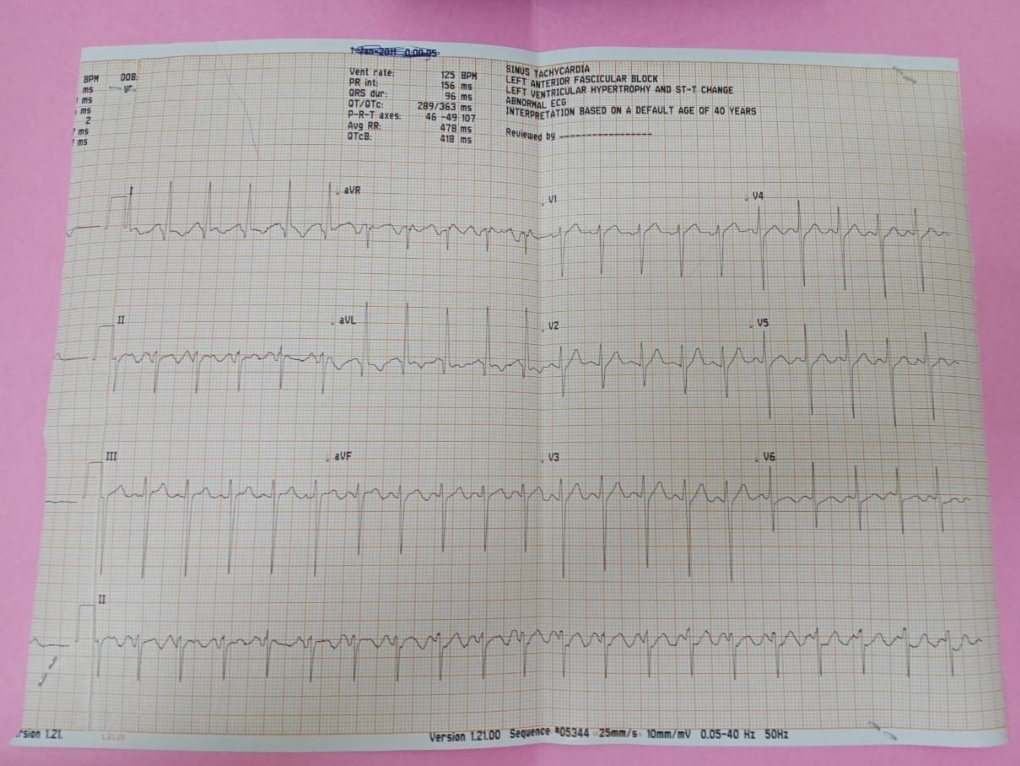Formative Assessment
50 year man, he presented with the complaints of
Frequently walking into objects along with frequent falls since 1.5 years
Drooping of eyelids since 1.5 years
Involuntary movements of hands since 1.5 years
Talking to self since 1.5 years
More here
https://archanareddy07.blogspot.com/2021/02/50m-with-parkinsonism.html?m=1
Case presentation links:
https://youtu.be/kMrD662wRIQ
a). What is the problem representation of this patient and what is the anatomical localization for his current problem based on the clinical findings?
50 y/o male who is a farmer by occupation presented with c/o frequently walking into objects along with frequent falls, drooping of eyelids, reduced arm swing, involuntary movements of hands and talking to self since 1.5 years was diagnosed with progressive supranuclear palsy.
Anatomical Localization
self talking and bed wetting- frontal lobe (Pre frontal area Broadmann 8,9).
Drooping eyelids - LPS (suggests 3rd nerve involvement).
Doll's eye - suggests a supranuclear lesion.
Involuntary movements and frequent falls - Basal Ganglia.
b) What is the etiology of the current problem and how would you as a member of the treating team arrive at a diagnosis? Please chart out the sequence of events timeline between the manifestations of each of his problems and current outcomes.
Episode of seizures 10 years ago.
DM Type II - 2 years ago
Sudden blurring of vision while riding bike met with RTA 2 years ago which caused a fracture in left leg for which he was operated.
Frequently walking into objects a/w frequent falls.
Drooping of eyelids,Involuntary movts. of hands.
Talking to self 1.5 years back.
Non productive cough 8 months back.
Non-healing ulcer at surgical site(left leg) 7 months ago.
1 week hospital stay - was diagnosed to have PSP, was given Syndopa 110 mg and Quetiapine.
5 days later he presented to casualty and was unresponsive with a GCS of 3/15 with h/o 2-3 episodes of vomitings.
2 more episodes of generalized tonic seizures in casualty - were treated with Levipil.
Suddenly his saturations & heart rate dropped with no peripheral pulsations and patient was intubated - CPR done and was resuscitated.
He is now on Mechanical Ventilator on CPAP.
c) What is the efficacy of each of the drugs listed in his current treatment plan?
https://www.ncbi.nlm.nih.gov/pmc/articles/PMC2699657/
https://www.ncbi.nlm.nih.gov/pmc/articles/PMC2699657
Case:2
Patient was apparently asymptomatic 2 years back then he developed weakness in the right upper and lower limb, loss of speech.
More here:
https://ashfaqtaj098.blogspot.com/2021/02/60-year-old-male-patient-with-hrref.html?m=1
Case presentation links:
https://youtu.be/7rnTdy9ktQw
a). What is the problem representation of this patient and what is the anatomical localization for his current problem based on the clinical findings?
A 60 year old man with a history of CVA 6 months back presented with dyspnea, bilateral pedal edema, reduced urine output & generalised weakness since 2 months.
Anatomical Localization
Heart - Secondary to atherosclerosis (CAD).
History of CVA 2 years ago.
b) What is the etiology of the current problem and how would you as a member of the treating team arrive at a diagnosis? Please chart out the sequence of events timeline between the manifestations of each of his problems and current outcomes.
Etiology
Coronary artery disease (CAD).
ECG - Poor R wave progression.
Chest Xray PA shows Cardiomegaly.
2D echo is suggestive of Heart failure DCMP with Hypokinesia at RCA, LCX.
Sequence of events
CVA 2 years ago
SOB, pedal edema, decreased urine output & generalized weakness since 2 months.
Treated with diuretics, beta blockers & ARB.
Symptomatically improved and discharged.
c) What is the efficacy of each of the drugs listed in his current treatment plan.
Salt and fluid restriction
https://www.sciencedirect.com/science/article/pii/S2213177915006551
Randomized Aldactone Evaluation
https://pubmed.ncbi.nlm.nih.gov/10471456/
Benfomet as thiamine replacement in alcoholic patients
https://www.ncbi.nlm.nih.gov/pmc/articles/PMC4550087/
3) 52 year old male , shopkeeper by profession complains of SOB, cough ,decrease sleep and appetite since 10 days and developed severe hyponatremia soon after admission.
More here
https://soumya9814.blogspot.com/2021/01/this-is-online-e-log-book-to-discuss.html?m=1
Case presentation video:
https://youtu.be/40OoVEQBgS4
a) What is the problem representation of this patient and what is the anatomical localization for his current problem based on the clinical findings?
A 52 year old man, who is a known diabetic and a hypertensive presented with dyspnea since 10 days , disturbed sleep since 10 days, productive cough since 2 days.
Anatomical localization
Lung Pathology (?Lower respiratory tract infection)
b) What is the etiology of the current problem and how would you as a member of the treating team arrive at a diagnosis? Please chart out the sequence of events timeline between the manifestations of each of his problems and current outcomes.
Etiology
Dyselectrolytemia.
Poorly controlled blood sugars.
Dimorphic Anemia.
Sequence of events
T2DM & HTN
SOB & Cough
Decreased sleep and appetite since 10 days
Diagnoesed with dyselectrolytemia
Treated conservatively & discharged
c) What is the efficacy of each of the drugs listed in his current treatment plan especially for his hyponatremia? What is the efficacy of Vaptans over placebo? Can one give both 3% sodium as well as vaptan to the same patient?
Role of Vaptans
https://www.ncbi.nlm.nih.gov/pmc/articles/PMC3678699/#:~:text=Vaptans%20are%20the%20most%20appropriate,dose%20of%20diuretics%20in%20CHF.
4) Please mention your individual learning experiences from this month.
1.Performed High quality CPR on an ICU patient.
2.Performed an ascitic tap on a CLD patient.
3. Assisted in an LP procedure.
4.Followed up a case of ? Broncho-alveolar carcinoma which after lung biopsy turned out to be organizing pneumonia
5. Followed up a case of Chronic Budd chiari syndrome
6.Followe up a case of primary PAH
7. Examined a case of CVA
8. Followed up a case of severe PAH secondary to PTB--lung fibrosis--cor pulmonale
9. Learnt about renal transplant requirements
10.Learnt about the new drugs used and their efficacies.



